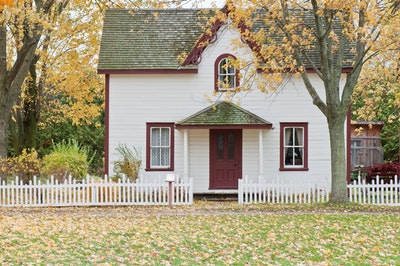5 Ways to Save Money for a Down Payment on a House Next Year

House prices have soared in recent years, making the size of the deposit required for most home buyers substantially higher. With the rising cost of living, saving even a small part of your paycheck can seem like a daunting task. Saving thousands for a down payment on your new home will require a considerable amount of discipline and a well-executed strategy.
We’ve created a list of 5 ways you can start to save money in preparation for buying a house next year, here are our tips:
#1 Understand the Market Trends
It is imperative to research both the national and local housing market before buying a home. The National Association of Realtors publishes a listing report that gives you an opportunity to compare your market to the national average while providing insight about where prices are headed in your city.
This will enable you to time the real estate market and buy when interests are low or on certain times when you’re more likely to get a favorable deal or find a wide selection of homes.
#2 Find out How Much You Need
The other thing you need to do when saving for a house down payment is to figure out how much you’ll need to put aside. Arrange to have a meeting with a mortgage lender to help you calculate how much of a mortgage you can qualify for based on your financial circumstances.
As a first-time home buyer, most conventional credit institutions will lend you 80% of the value of your home, so your deposit will be the other 20%.
#3 Set a Time Frame
Give yourself a realistic time frame for how long you’ll need to save and work out what you need to put away each month. You want to save as much as possible to make sure your timeline is realistic – you’re are more likely to make more out of 12 months of moderate savings than 12 days of huge savings.
#4 Check What You Spend
There are many luxuries you could cut back on to reach your goal quicker. Avoid spending on non-essentials and impulse purchases, as these type of expenditures delays your dream of owning your own home.
To effectively do this, keep track of your spending over a given period by setting aside all expense receipts and tallying your income vs. outlays to have an idea of how much your spending and where you may be able to cut some costs. It might surprise you how much you spend in a month on coffee, lunches, event tickets and alcohol.
Further, when you go shopping, compare product prices, and whatever you can save by buying the cheaper version, put it into your home deposit money. When you save enough of these seemingly small amounts, it all adds up to a significant amount.
#5 Have Flexibility in Your Savings Plan
Regardless of the size of your deposit, it’s important to build flexibility into your savings plan. Ensure you factor in a certain amount of leeway to cover unexpected costs like car maintenance/repairs, emergencies, and other contingencies. Unexpected financial demands can significantly disrupt your savings hence the need to plan for unforeseen events that carry a financial impact.
Purchasing a home can be a lengthy and tedious process that requires your commitment and discipline but take it all as a preparation for homeownership. With a robust savings strategy and a few tweaks to your spending habits, there’s every chance you could save the required deposit for a house in the coming year. It all depends on how motivated you are to accomplish your financial goals.
What are you doing to save for a down payment for a new house?




